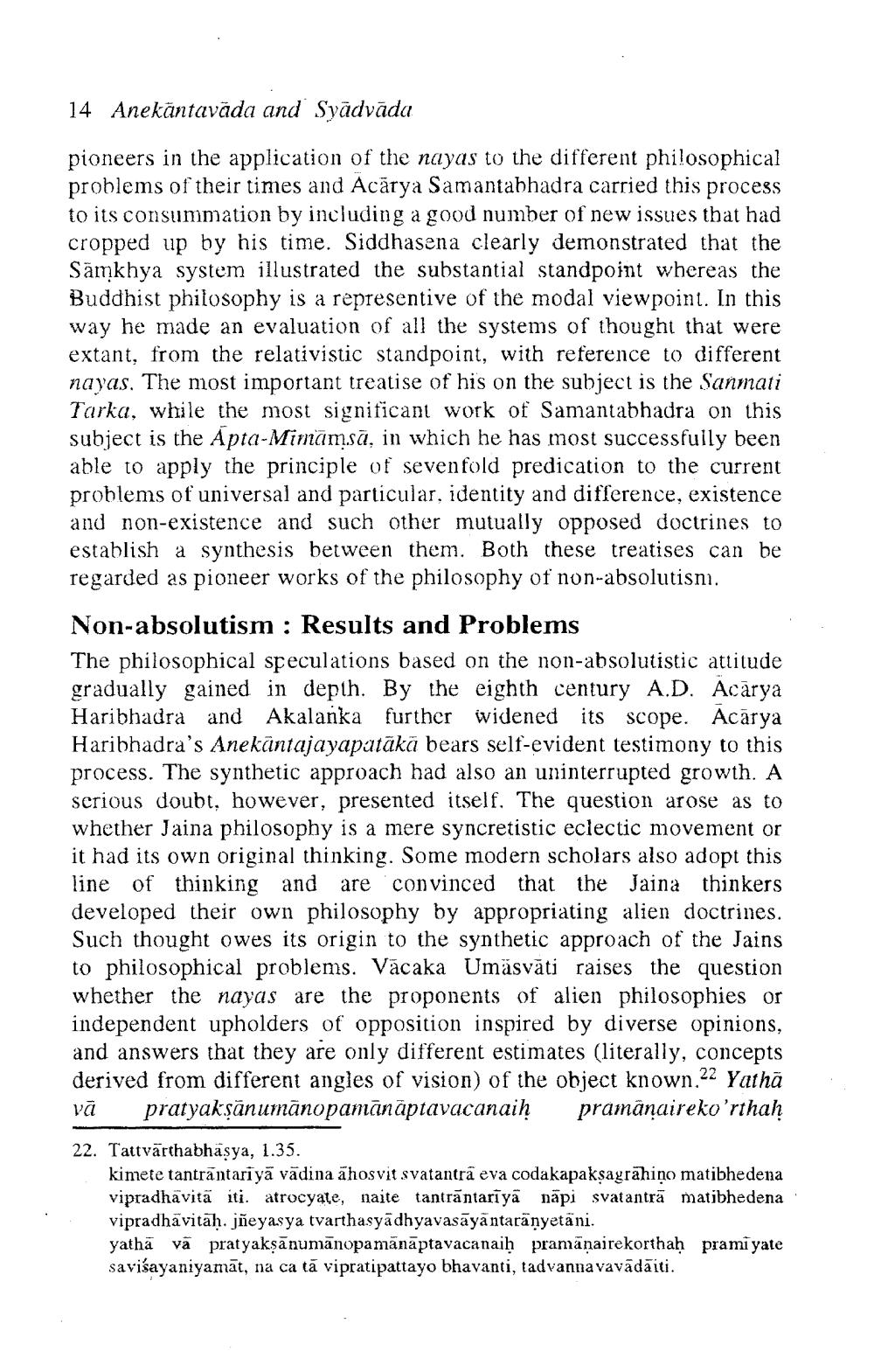________________
14 Anekantavāda and Syādvāda
pioneers in the application of the nayas to the different philosophical problems of their times and Acārya Samantabhadra carried this process to its consummation by including a good number of new issues that had cropped up by his time. Siddhasena clearly demonstrated that the Samkhya system illustrated the substantial standpoint whereas the Buddhist philosophy is a representive of the modal viewpoint. In this way he made an evaluation of all the systems of thought that were extant, from the relativistic standpoint, with reference to different nayas. The most important treatise of his on the subject is the Sanmati Tarka, while the most significant work of Samantabhadra on this subject is the Apta-Mināmsā, in which he has most successfully been able to apply the principle of sevenfold predication to the current problems of universal and particular. identity and difference, existence and non-existence and such other mutually opposed doctrines to establish a synthesis between them. Both these treatises can be regarded as pioneer works of the philosophy of non-absolutism.
Non-absolutism : Results and Problems The philosophical speculations based on the non-absolutistic attitude gradually gained in depth. By the eighth century A.D. Acārya Haribhadra and Akalanka further widened its scope. Acārya Haribhadra's Anekantajayapatākā bears self-evident testimony to this process. The synthetic approach had also an uninterrupted growth. A serious doubt, however, presented itself. The question arose as to whether Jaina philosophy is a mere syncretistic eclectic movement or it had its own original thinking. Some modern scholars also adopt this line of thinking and are convinced that the Jaina thinkers developed their own philosophy by appropriating alien doctrines. Such thought owes its origin to the synthetic approach of the Jains to philosophical problems. Vācaka Umäsvāti raises the question whether the nayas are the proponents of alien philosophies or independent upholders of opposition inspired by diverse opinions, and answers that they are only different estimates (literally, concepts derived from different angles of vision) of the object known.22 Yathā vā pratyaksānumānopamānāptavacanaih pramānaireko'rthah
22. Tattvārthabhäsya, 1.35.
kimete tantrantariyā vādina āhosvit svatantrā eva codakapaksagrāhiņo matibhedena vipradhavitā iti. atrocyate, naite tantrāntarīyā näpi svatantrā matibhedena vipradhävitān. jñeyasya tvarthasyādhyavasāyā ntaranyetāni. yathā vā pratyakşānumānopamānāptavacanaih pramānairekorthah prami yate savisayaniyamāt, na ca tā vipratipattayo bhavanti, tadvannavavādāiti.




